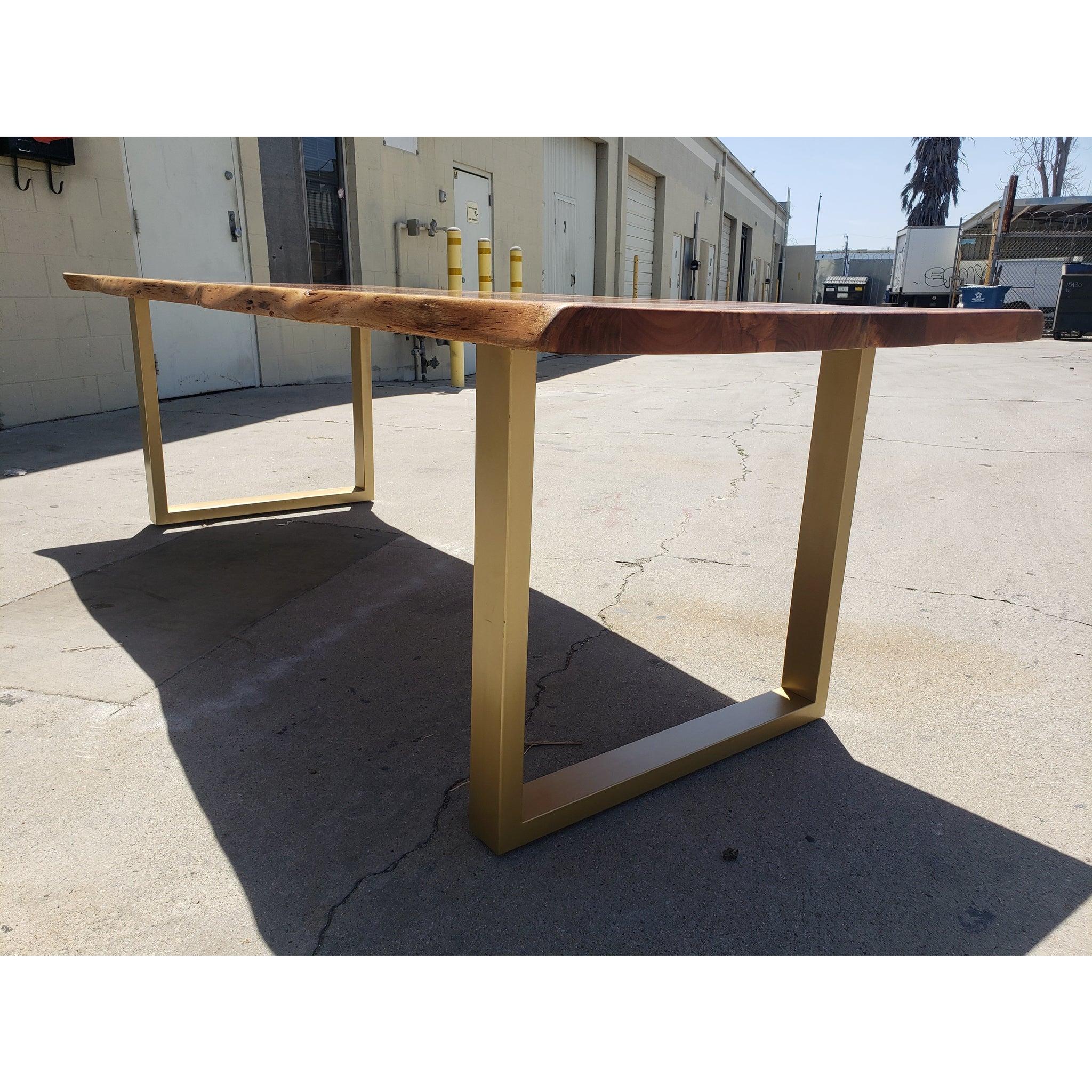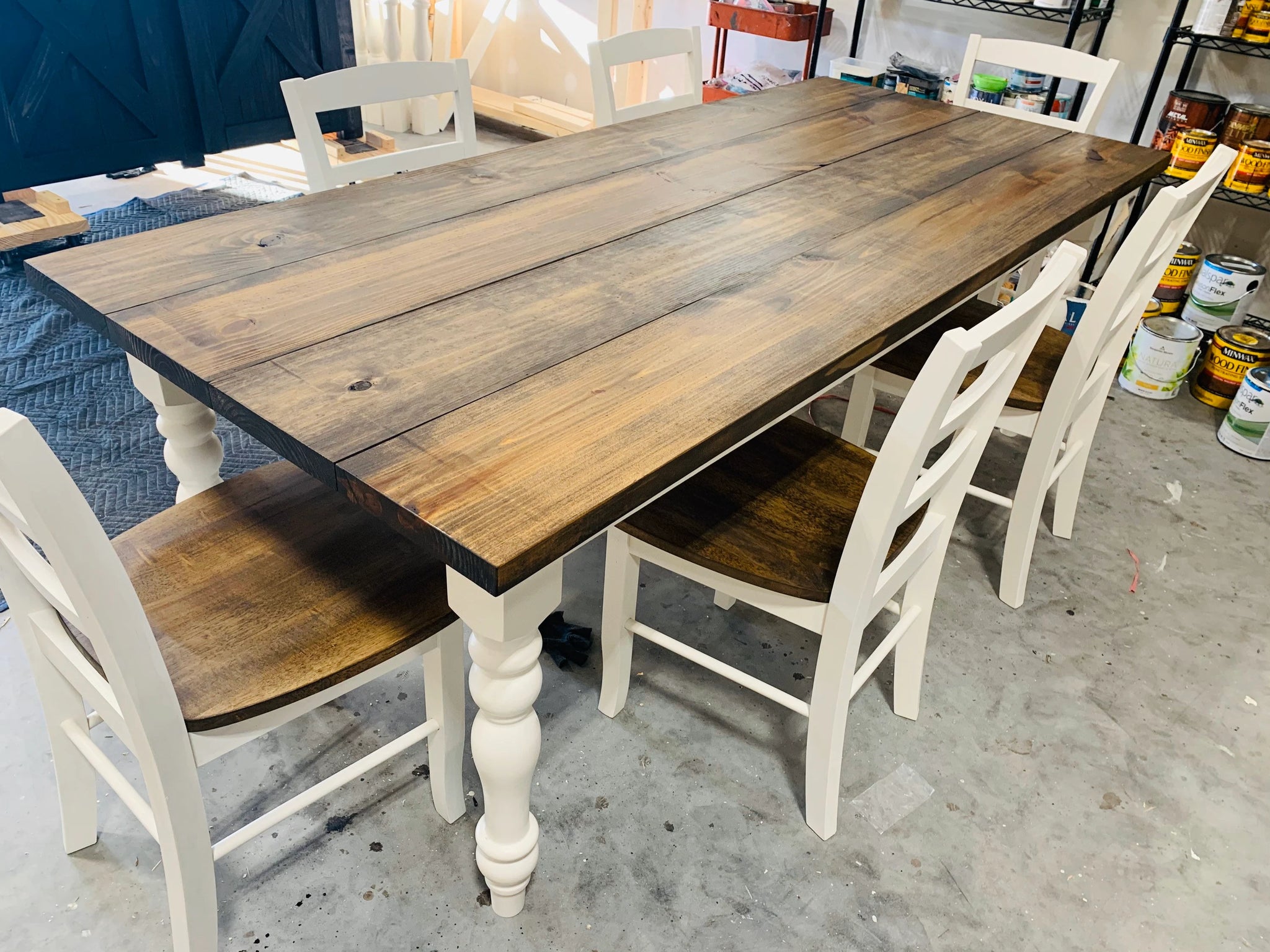Discover Versatile Styles for Personalized Dining Table Legs Wood Solutions
Discovering the Different Types of Eating Table Legs Timber for Your Eating Room
The choice of table legs wood can greatly influence both the aesthetic and useful top qualities of your dining room. Strong wood options, such as oak and walnut, offer a classic look with unequaled toughness, while engineered wood options use innovative layouts that mimic the richness of natural grains. Furthermore, the expanding trend of redeemed timber introduces a lasting aspect that allures to ecologically conscious consumers. As we explore these different options, it comes to be vital to think about not only the visual appeal however also the functional effects of each material selection. What aspects should lead your choice?
Strong Wood Options

Unlike crafted materials, solid wood is much less susceptible to warping and damage over time when correctly preserved. Each piece of solid wood is special, showcasing specific attributes that add to the beauty and personality of the eating table.
In addition, strong wood can be completed in various methods, varying from natural oils to stained surfaces, permitting homeowners to personalize their furnishings to match their decor. In summary, picking strong timber for eating table legs not only guarantees structural integrity however likewise enhances the visual appeal of the eating area, making it a beneficial financial investment for any type of home.
Engineered Timber Alternatives

Plywood, built from numerous layers of timber veneer, is stable and specifically solid, making it a superb selection for dining table legs. Its layered composition permits it to stand up to adjustments in humidity and temperature much better than conventional solid wood. MDF, on the various other hand, provides a smooth surface area for painting or veneering, allowing developers to achieve a refined appearance while keeping architectural stability.
When choosing crafted timber choices, it is important to consider the desired use and desired aesthetic. These products not just enhance the performance of eating rooms however additionally permit for better layout flexibility, making certain that modern and traditional styles can exist together sympathetically.
Reclaimed Timber Features
Recovered wood offers a distinct mix of sustainability and character, making it a progressively prominent choice for dining table legs. Sourced from old barns, factories, and other frameworks, recovered timber symbolizes a background that brand-new materials merely can not reproduce. Each item brings its own tale, marked by distinctive imperfections, knots, and differing grain patterns, which add to a table's special visual appeal.
Along with its aesthetic appeal, recovered timber is an eco-friendly alternative. By repurposing index formerly used materials, it decreases the demand for brand-new lumber, hence aiding to reduce and save forests waste. This straightens with a growing consumer preference for lasting methods in furnishings.
In addition, recovered wood is often more long lasting than freshly collected wood as a result of its age. The natural drying out procedure that reclaimed wood undergoes lead to a denser and more powerful product, making it much less susceptible to warping and splitting. This improves the long life of eating tables, permitting them to stand up to the rigors of everyday use.
Softwood vs. Wood
When picking eating table legs, recognizing the distinctions between softwood and wood is critical for accomplishing both visual and functional goals. They usually show an even more rustic look, making them suitable for country-style or laid-back eating spaces.
On the various other hand, woods, sourced from deciduous trees like maple, oak, and cherry, are renowned for their thickness, stamina, and sturdiness. The intricate grain patterns and rich colors of woods offer a advanced and ageless charm, making them suitable for formal dining setups. While hardwoods tend to be extra expensive and much heavier, their durability versus deterioration often justifies the investment.
Ultimately, the option in between softwood and hardwood for dining table legs ought to align with your style vision, use requirements, and spending plan, making certain that your eating area shows your personal style while continuing to be useful with time.

Surfaces and Therapies
The aesthetic charm and longevity of table legs can be dramatically improved with numerous coatings and therapies. These procedures not just secure the wood from damages but additionally boost its look, enabling it to complement diverse indoor designs.
One typical treatment is staining, which penetrates the timber and enhances its all-natural grain while including color. Stains offer an abundant, sophisticated appearance, allowing home owners to match their furniture with existing decor. On the other hand, clear finishes such as polyurethane or varnish create a safety layer without changing the wood's initial color, making sure toughness against deterioration.
Furthermore, all-natural oils, like tung or linseed read what he said oil, nurture the Get the facts wood and supply a subtle shine, all while being environment-friendly. These oils enable the surface to take a breath, stopping wetness build-up and prospective warping.
For those looking for a rustic appeal, distressed or weather-beaten finishes can be put on develop an aged appearance, adding character to the piece. Eventually, the selection of coatings and treatments depends upon individual preference, desired aesthetics, and the particular wood type, making it important to think about these elements when picking eating table legs for your space.
Verdict
Solid timbers, crafted choices, and reclaimed options each offer distinctive benefits, providing to various preferences and needs. Eventually, the selection of timber type need to align with wanted design, longevity, and ecological factors to consider, boosting the general eating experience.
The selection of dining table legs timber can exceptionally affect both the functional and visual top qualities of your eating space - Dining Table Legs Wood. Solid timber alternatives, such as oak and walnut, supply a traditional look with unmatched resilience, while engineered wood options use innovative designs that resemble the richness of natural grains. Solid timber offers a timeless top quality that can elevate the general layout of an eating room. Each piece of strong wood is one-of-a-kind, showcasing specific characteristics that include to the beauty and character of the dining table
Moreover, recovered wood is usually more resilient than newly harvested wood due to its age.